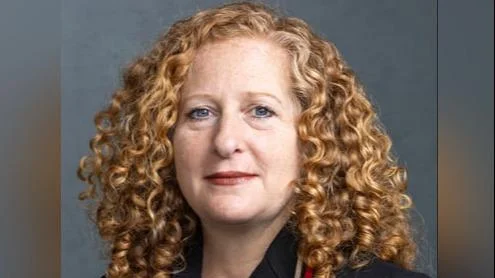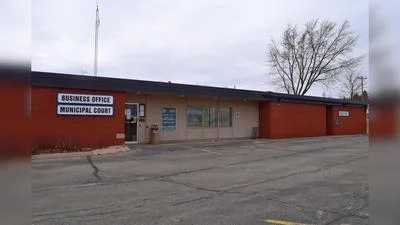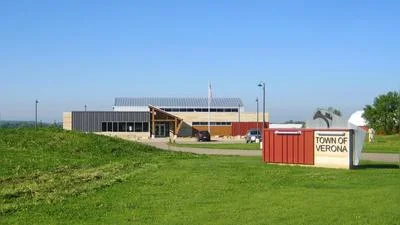Jennifer Mnookin Chancellor | Official website
Jennifer Mnookin Chancellor | Official website
A fusion device at the University of Wisconsin–Madison generated plasma for the first time on Monday, signaling a significant step toward realizing a carbon-free energy source.
Over the past four years, a team of UW–Madison physicists and engineers has been constructing and testing the fusion energy device known as WHAM (Wisconsin HTS Axisymmetric Mirror) at UW’s Physical Sciences Lab in Stoughton. This week, it transitioned to operations mode, marking a major milestone for the project, which has received support from the U.S. Department of Energy.
“The outlook for decarbonizing our energy sector is just much higher with fusion than anything else,” said Cary Forest, a UW–Madison physics professor who has helped lead the development of WHAM. “First plasma is a crucial first step for us in that direction.”
WHAM began in 2020 as a partnership between UW–Madison, MIT, and Commonwealth Fusion Systems. It will now operate as a public-private partnership between UW–Madison and spinoff company Realta Fusion Inc., positioning it as a major force for fusion research advances at the university.
Like fission, its nuclear energy counterpart, fusion produces carbon-less byproducts, making it one of the cleanest potential energy sources in terms of greenhouse gases. Fission, however, produces long-lived radioactive byproducts that must be safely stored for long periods.
Fusion’s fuel — deuterium and lithium — are abundant and relatively cheap. These are used to create tritium. Fusion occurs when heated plasma of deuterium and tritium ions is magnetically moved at rapid speeds in a reactor. The ions collide and fuse their nuclei, releasing energy captured as heat for industrial processes or converted to electricity.
“We think fusion will be as good at producing electricity as any energy source would be,” Forest stated. “The world makes more carbon and uses more energy making things than it does moving things or turning the lights on. If we’re going to solve the climate change problem, we should probably be focused even more on how we make things than how we move things.”
Fusion occurs naturally in stars to create heat and energy. Researchers have tried to replicate this process with devices known as mirror machines. These machines use inward-facing magnets to limit particle escape from reactors but had limited efficiency until recent developments in high-temperature superconductor magnets.
Since 2020, UW–Madison, MIT, and Commonwealth Fusion Systems have received $10 million in grants from the U.S. Department of Energy to build WHAM. With these powerful magnets developed by Commonwealth Fusion Systems and received earlier this month, UW–Madison researchers achieved first plasma on July 15.
First plasma marks the transition from building to operations and begins the discovery phase of research under a public-private partnership with Realta Fusion Inc., focusing on commercializing mirror fusion. In June 2023, Realta was selected for Department of Energy milestone funding similar to NASA's commercial space program initiatives.
“WHAM is a unique experiment,” said Jay Anderson, a scientist at UW–Madison and co-founder of Realta. “Realta over the last year and a half has really amplified what the UW team has been able to accomplish.”
The WHAM team will now focus on improving efficiency and preparing for future advancements.
“We want to find the showstoppers,” Forest added. “Can we build the magnets? Can we increase plasma stability? How well can we confine the plasma? These questions will take several years to address well.”
Support for this research was provided by multiple entities including ARPA-E award DE-AR0001258; University of Wisconsin–Madison; Wisconsin Alumni Research Foundation; Realta Fusion Inc.; Commonwealth Fusion Systems; Fermi National Accelerator Lab; General Atomics; Los Alamos National Lab; Max Planck Institute of Plasma Physics (Greifswald); Massachusetts Institute of Technology; TAE Technologies; U.S. Department of Energy; University of Wisconsin–Madison.






 Alerts Sign-up
Alerts Sign-up